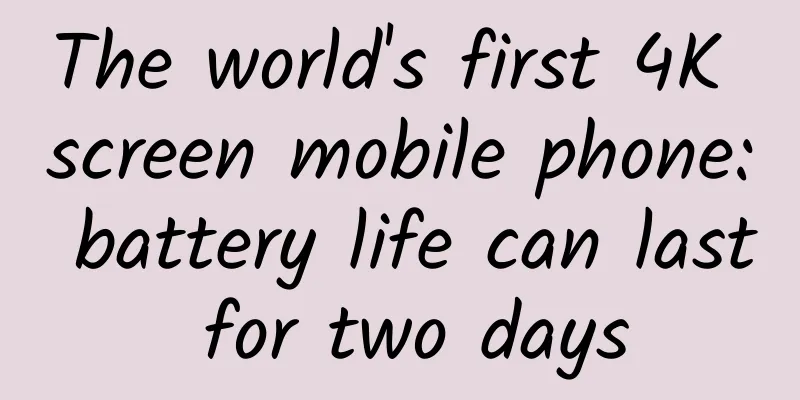As APP has developed to this day, where should small and medium-sized developers go?

|
If 2010 is regarded as the first year of mobile Internet, then the new product APP has been developed for more than four years. In these four years, APP has experienced the struggle with WAP, HTML5, public accounts, and light applications. The result is obvious. APP has become the current winner with its unique product form and ecological links. There are two reasons why APP can win this battle: First, the product is more suitable for the new operating environment. Since Apple pioneered multi-touch operation, various touch-screen and sensor-based operation methods have been fully utilized in various APPs. Whether it is sliding, shaking, or touching, the user experience of APPs is the most complete and consistent. Second, the ecosystem is more open. The two major ecosystems of iOS and Android have established an open and standard development environment. It is undoubtedly more practical to achieve innovation in these two ecosystems than to develop in dozens of browsers or some closed ecosystems. In fact, many mobile Internet companies that have recently IPOs also rely heavily on these two ecosystems. However, just as the APP is developing so rapidly, a sense of pessimism is beginning to spread among product managers. Two huge mountains stand in front of developers First of all, today's APP developers are not facing competition from other product forms, but competition from product creativity. In the past, as the mobile Internet had just started, there were points for innovation in almost every product field, whether it was industry, type, design style, operation mode, etc., new APPs emerged in an endless stream. After these years of development, a good idea is almost an unattainable goal. From secret to Moman, from 2048 to Don't Step on the White Blocks, for a whole year, there were only a few truly innovative products on APP, and behind them were countless cloned products. Without a unique idea, how can you make your APP stand out from millions of APPs and break through the layers of blockades set by the giants on the TOP list? Confident developers may think that creativity always comes in a flash of inspiration, what if I succeed? Then the appearance of the second mountain makes it even more difficult to breathe. One reality is that the battle for the top spot on the mobile desktop has already been fought! WeChat, maps, news, and banking products have already won a decisive victory. From the perspective of the entire market, the objective reality is: the rapid popularization of smartphones is almost coming to an end, the number of apps installed on users' phones is decreasing, the time an app stays on the screen is getting shorter and shorter, and the difficulty of squeezing into the first and second screens of mobile phones is increasing exponentially. Can new forces emerge in the APP industry? What is the way out for small and medium-sized developers? After four years of development, over one million apps have completed the mobile transformation of various Internet products, and the positioning of various products has basically been completed. The competition and ownership of core products such as communication, location, news, and information has basically come to an end. At least 80% of the competition for the position of the mobile phone home screen has been completed. Games and video products have become the only uncertain factors. If we review and summarize the development model of APP 1.0, we will find that although all APPs of this era have different forms, they all follow an iron rule: let users think of this APP in a specific scenario, which is the so-called scene memory (conditional reflex). For example, when chatting, users will think of WeChat, when finding the way, they will use navigation, when eating, they will use Dianping, and so on. A series of life scenarios have become the core starting point for developers to plan and design APPs. [Scenario-based design] has created the common characteristics of the breakthrough of the first generation of APPs. APP 2.0 era: new technologies and products based on scenario discovery With the development of mobile Internet, almost all scenarios have been developed. Under the pressure of giants and brands, the road to breakout is extremely difficult. How to win users in the new environment has become a common issue for all APP developers. The continuous emergence of technology provides new opportunities for such a breakthrough. In the early days of mobile Internet development, GPS-based location services (LBS) became a must-have feature for many mainstream apps today. Later, various sensors on smartphones provided a platform for the "shake to play" feature. Today, smartphone hardware combined with machine learning pattern recognition algorithms have created a new technology field - motion pattern recognition. This development trend was further reminded at the iPhone 5s launch conference in 2013. At the same time as the launch of the 5s, Apple also released a motion coprocessor dedicated to smartphones. This technology, which sounds a bit geeky, has opened up a new world for a new generation of apps. In the following months, motion pattern recognition products represented by apps such as Moves (acquired by Facebook) and Weiche have become a new group of pathfinders. These products use a smartphone-based software and hardware collaborative algorithm to accurately identify the current motion state of the phone owner, and then identify the scene the owner is in, such as running, driving, etc., and then provide corresponding services based on such scenes, such as road conditions, speed limits, etc. The APP automatically identifies the scene and then provides services, creating a new user service model. In this model, it is no longer important whether the user can remember the APP in a specific scene, and it is no longer important whether the user has installed the APP on the first screen or the second screen. Instead, the APP will autonomously serve the user through push notifications in a specific environment. What the APP needs to do is to accurately identify the scene and make the user feel the value of the service instead of harassing it. If motion mode recognition is still limited to sports or driving products, then the use of iBeancons and APPs combined with other smart hardware will have the opportunity to further expand the application space of scene discovery. Whether it is indoor positioning or smart home, there is an opportunity to provide a broad development space for scene discovery APPs. The development of scene memory has reached its peak, and new technologies and products based on scene discovery will usher in the brilliant era of APP 2.0. Link to this article: |
<<: 18K gold Apple Watch rumored to be on sale for $5,000 on Valentine's Day
>>: Does your phone need to be customized?
Recommend
Chen Dahei Niu's introductory course on live streaming sales operations, hand-in-hand teaching you how to sell millions of units a month in your live streaming room
Chen Dahei Niu's introductory course on live ...
Comprehensive and easy to understand! A guide to information architecture design for beginners
Many product designers are obsessed with the use ...
Virtual atlas website training camp project: Matrix station group automated transaction, 3-5 months to achieve rapid profit monthly income of 10,000+
Virtual atlas website training camp project: Matr...
Discussing APP user operation from the four elements of attracting new users, retaining users, promoting activation and generating revenue
" In the Name of People ", this fascina...
Drinking hydrogen water, breathing hydrogen gas, taking hydrogen baths... can it really cure all diseases?
gossip Drinking hydrogen water, inhaling hydrogen...
If you don't overthrow the three giants of BAT, you will be the next to die.
Internet giants led by Baidu, Alibaba and Tencent...
Smartisan smartphones are popular, but Luo Yonghao’s English is out of fashion
This month, the Hammer phone was officially releas...
10 underwear cleaning liquids vs. ordinary laundry detergents: blood stain killer, antibacterial, gentle on hands, which one is better?
"80% of recurrent gynecological diseases, su...
Does Starbucks have "medium cup discrimination"? No, this is their marketing!
A while ago, it was the Christmas green cup that ...
Stop blindly comparing. This article teaches you how to judge whether your baby's height and weight meet the standards.
Author: Hu Fang, deputy chief physician, Women an...
TCL L55C1-CUD curved TV experience: It's time to experience the next generation of living room entertainment
In today's world, curved things always seem t...
Are there billions of pieces of space debris? Shenzhou 19 sets out to install a "golden bell cover" for the space station
At dawn on October 30, Cai Xuzhe, Song Lingdong a...
A simple trick to quickly increase your title open rate!
No matter what I say. No matter how good the cont...
Fourth in the world! He led the team to conquer chlortetracycline and broke the US monopoly
In January 1956, the CPC Central Committee decide...
WeChat Tips: As long as you have used the web version of File Transfer Assistant, you can use the web version of WeChat
IT Home December 27 news, thanks to the enthusias...









